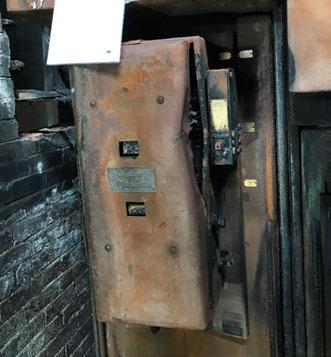
3 minute read
Technical Committee Updates
from AMPS Power 2021 Winter Issue
by AMPS
AMPS TECHNICAL COMMITTEE UPDATES
By Bernard Gospel – Technical Committee Secretary
TechSec@AMPS.org.uk
RED DIESEL – REBATED FUEL
Further to our advice in October concerning The changes to the fuel and duty regulations, the government have updated their advice here:
https://www.gov.uk/government/ publications/changes-to-rebated-fuelsentitlement-from-1-april-2022
Affected Members should read the guidance carefully and if necessary, seek appropriate advice. Please note especially the following which is only a summary extract:
How to prepare for the changes to rebated fuel if you’re a fuel user:
1. REBATED FUEL IN STORAGE TANKS
If you’re no longer going to be allowed to use rebated fuel from 1 April 2022 as a result of these changes, you should plan to use up stocks of fuel held in storage tanks by this date. You will not be expected to flush out rebated fuel from your storage tanks. Please read the rest of this section carefully.
2. VEHICLES (AND MACHINERY) USED FOR BOTH ALLOWED AND NON-ALLOWED PURPOSES
If you use a vehicle (including any machines or appliances) which is used for both allowed and non-allowed purposes after the rules change, you will need to either: • Flush out the tank to remove all traces of rebated fuel when switching uses • Use full duty paid diesel or biofuels
3. BACK-UP ELECTRICITY GENERATION AND ENVIRONMENTAL PROTECTION EQUIPMENT
You can only use rebated fuel for power generation in premises being used for noncommercial purposes. You can use up your stock of rebated fuel after the rules change if you obtained and stored the fuel on or before 10 June 2021. The fuel can be used for any of the following uses: • Contingency back-up electricity generation in premises used for commercial purposes • Critical safety and environmental protection appliances in premises used for commercial purposes If you have stocks of rebated fuel held to be used as contingency back-up which were obtained after 10 June 2021, or you cannot change from using rebated fuel for technical or safety reasons, you may be granted a licence by HMRC to continue using rebated fuel.
3.1 CONTINGENCY BACK-UP ELECTRICITY GENERATION
Contingency back-up electricity generation means using back-up generators when necessary to make sure there is continuity of power. This does not include generators used as the main source of everyday electricity. It can also be commercial electricity generators, such as, those activated to manage pressures to the national grid and where a volume of back-up fuel is required to be held in reserve for security and regulatory purposes to maintain essential electricity supply. Critical safety and environmental appliances include: • Fire protection systems • Medical and life support equipment • Auxiliary boilers which are designed to provide safety and environmental protection AMPS will monitor the government charges to this advice and issue to members as necessary. Please address any comments, concerns and questions to TechSec@AMPS.org.uk
GRID CONNECTIONS IN GB
AMPS Technical Committee continue to work with ENA and other interested parties on grid connections. A meeting took place on the 21st September attended by AMPS. The requirements for the interchange of system data for modelling studies is receiving growing attention.
HSE ISSUES SAFETY NOTICE FOLLOWING CIRCUIT BREAKER EXPLOSION
We do not normally circulate H&S links, but this one will be directly relevant to many AMPS Members activities. HSE has issued a safety notice following an investigation into an explosion of a highvoltage (HV) circuit breaker. The recent investigation indicated that maintenance may have been a causal factor. The incident resulted in catastrophic failure of the HV circuit breaker, leading to fire/ explosion, and could have resulted in fatal injuries. Maintenance of HV and low-voltage (LV) circuit breakers typically involves both the cleaning and lubricating of the operating mechanism. The HSE investigation found that the same product was used for both maintenance activities, but evidence shows that the product was only suitable for cleaning and not lubrication. It is essential that the correct product is used for each task. View the safety notice and link for full details.
www.hse.gov.uk/safetybulletins/ lubrication-circuit-breakers.htm?


FAQS
There are two FAQs in preparation which will be added to the AMPS website when completed: AMPS FAQ 1021A Maintenance and testing of standby generating sets AMPS FAQ 1024A Loss of mains detection One FAQ in final draft AMPS FAQ 1004B Emission Level Compliance Any queries on the above should be addressed to






